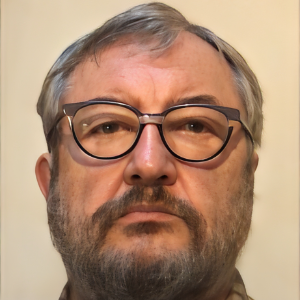Title : Transaxillar breast augmentation with and without endoscope aim at different outcomes
Abstract:
The endoscopically assisted Transaxillar Breast Augmentation (TBA) is usually favoured over the “blind” transaxillar approach because of the visual control over the dissection and hemostasis. ?his makes one believe that these two are same surgeries in all other respects. Indeed, we deal with same small breasted women with poorly developed inframammary crease (IMC). Most of the time they are slim and we have to go to submuscular plane. Sharp cautery dissection is claimed to be a technical advantage over the rude blunt evulsion. But in fact, the differences between these two operations are much deeper, and emerge as early as in marking. In endoscopic TBA the desired IMC is primarily sure and must be observed by all means. While blind dissection must go 2-3 cm lower from the desired IMC. As the electrocautery is a principle endoscopic dissection tool, than infiltration is not welcome, while the blind dissection depends on tumescence both for hydrodissection + local analgesia + vasoconstriction. Along with the intercostal nerve block, the ample infiltration provides for full perioperative comfort for a patient and free movements. While postoperative pain is pertinent to a dry operative field, the Pectoralis Major muscle (PM) spasm and pain constitute the vicious circle, which may affect the implant position in the early postoperative period after endoscopic TBA. Endoscopically we open the deep fascia from underside to cut the PM lower insertions and weaken the superficial fascia for stretching the lower pole skin. In both techniques a space cranial to the footprint is created bluntly as a route for the implant placement. Than we endoscopically attenuate the flap to provide enough room for the implant. While in blind surgery we provide the necessary room by undermining the composite flap further on and hence we have yet another “hostile” space lower to the implant. These spaces account for different redraping of tissues. That means that in blind we have to deal with lower (idle hostile) space by blocking the implant downward displacement, as well as with the upper space. Endoscopically we end up with redraping problems only in the upper pole, while the IMC is primarily well defined. Both techniques provide for excellent results in 90%, otherwise we would not use them. Endoscopy is best when IMC needs no modification, meaning that the lower pole is well developed. Blind TBA effectively copes with lowering of IMC (but be careful not to confuse with tubularity. There is no constriction of the lower pole). Violations of postop regimen lead to displacements, which are always asymmetric. It can be quickly corrected by asymmetric compression, which may be additionally empowered by insertion under the compression strap.



